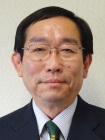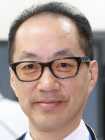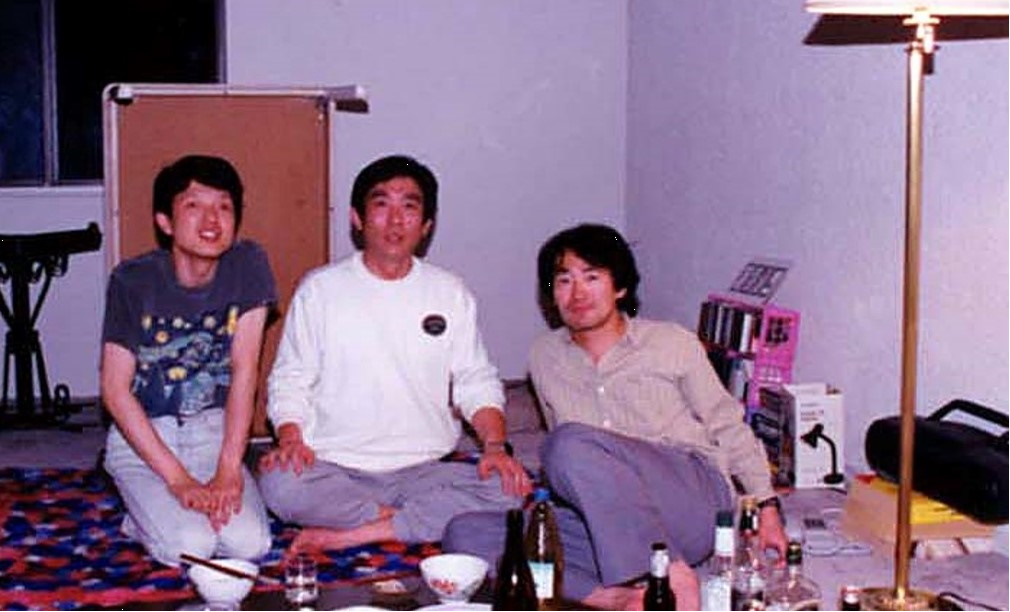Prof. Michiaki Mishima
A tribute by Prof. Shigeo Muro

Prof. Mishima
Prof. Michiaki Mishima graduated cum laude, Faculty of Medicine, Kyoto University, Japan in 1977. After his initial training in respiratory medicine, he got his PhD degree in 1986 at the Graduate School of Medicine, Kyoto University, through the studies on the peripheral pulmonary circulation time in COPD.
I met him for the first time in June 1989 at the Kyoto University Chest Disease Research Institute Hospital when he was a lecturer there in the Department of Pulmonary Physiology. I had just started my residency with him as my mentor. He was a clinician as well as a researcher full of ideas. He had been studying the physiology in COPD, expert in mathematical analysis of the uneven distribution of ventilatory blood flow, and gave a strong impression on me as a junior resident.
From 1992 to 1994, he was abroad as a visiting researcher at Meakins Christie Laboratories, McGill University, Montreal, Canada. He performed a variety of researches at Meakins including the development and model analysis of an alveolar oscillation method that measures the peripheral lung mechanics, (i) and the effect of pleural effusion on lung volume using chest CT volumetry in dog experiments.
He is an attractive person and fascinates many friends with his humour and wit. The photo on the right shows young Prof. Takahide Nagase of Tokyo University and Prof. Hajime Kurosawa of Tohoku University, enjoying a Japanese-style private party at his apartment near Meakins.
When he returned Kyoto University in 1994, I had just completed medical training at an affiliated hospital and went on to the Graduate School of Medicine, meeting again with him and started my career as a physician scientist. During the next four years, I was given excellent and rigorous research guidance from him and Prof. Yoshitaka Oku, his colleague who is now a professor at Hyogo College of Medicine.
At that time, the department head was the late Prof. Kenshi Kuno, and Dr Mishima led his team as the associate professor. He managed both patient care and research such as mechanics, physiology and imaging in addition to COPD clinical research. His research team was extremely active and motivated to discover new findings. It was like a place of assemblage for the bold and ambitious.
One of his achievements was the introduction of the concept of fractals into image analysis and published a number of clinically important findings. (ii) Among the team members from those days, Yoshitaka Oku, Toyohiro Hirai (Kyoto University), Yasutaka Nakano (Shiga University of Medical Science), and myself (Nara Medical University), have been promoted to university professors.
Since the period when he began to supervise our degree work in the mid-90's, he seemed to have a hard time due to reorganization of the university, and there were a lot of difficulties in pursuing research. However, he always kept cheerful, optimistic and positive, and was able to finally overcome such rough waves.
In 1998, he introduced me to Dr Hamid in Meakins Christie Laboratories, and I was given the opportunity to learn the basics of airway inflammation. After finishing post-doctoral course in Meakins, I came back to Kyoto to work with Dr Mishima again in 2001. Immediately after that he was unexpectedly elected as a professor of respiratory medicine at Kyoto University Graduate School of Medicine.
From then until March 2016, he led the management of the Department of Respiratory Medicine, Graduate School of Medicine as Professor and Chairman. Many young respiratory physicians and researchers had come to join him, and his department evolved tremendously.
Throughout his career he has been specialized in the study of COPD. In particular, he has been engaged in the digital imaging of X-ray chest CT in respiratory diseases for more than twenty years and developed original computer software quantifying peripheral airway space and airway wall dimension in COPD or bronchial asthma. He found that these tools contributed much to the understanding of the phenotype and comorbidity of COPD(iii). For these achievements, his research team was awarded the 42nd Beltz Prize (First Prize) in 2005. He was also awarded John B West Medal (International Workshop of Pulmonary Functional Imaging) in 2015.
At the same time as being chairman of the Department of Respiratory Medicine, he managed all the areas of respiratory medicine: respiratory cancer, respiratory infection, COPD, asthma, interstitial pneumonitis and respiratory failure, in collaboration with Prof. Kazuo Chin who is an expert in non-invasive ventilation and respiratory care. He successfully developed a new paradigm in the regenerative study of lung tissue such as induced puluripotent stem cells with his excellent co-workers.(iv)
In addition to his management of his own department, he had a lot of activities in public agencies. He was vice director, Kyoto University Hospital from April 2008 to March 2011, and worked as director of Kyoto University Hospital from April 2011 to March 2015. In addition to activities in the medical field, he also served as executive vice president at Kyoto University from October 2012 to September 2014. Through these activities, he has established a medical exchange programme with Bhutan, through which he sent me to that country for a short time as a respiratory physician.
He also showed his extraordinary talent for organizational management outside Kyoto University. He was the chairman of the board of directors at the Japanese Respiratory Society (JRS) from 2013 to 2015. During his chairmanship term, he introduced a web membership management system and voting at elections was conducted online. Now we have a members-only page through which we can check our number of credits earned and also change our business and personal information. In addition to respiratory medicine, Dr Mishima also held and chaired the Annual Meeting of the Japanese Society of Internal Medicine in 2015.
He has made many contributions to the APSR. He chaired the APSR Research Committee, one of the important standing committees to enlighten APSR young scientists and develop the scientific programme for them up to 2010.
In 2006, Prof Yoshinosuke Fukuchi was APSR Congress President and achieved a great success of the 11th Congress of APSR in Kyoto, Japan with 2,400 academic participants from 43 countries. This congress was led by Dr Mishima as the Congress Secretary General, closely working with him and his colleagues. In 2008, he was awarded the Harasawa Research Award(v) as a prestigious lecturer at the 13th Congress of the APSR in Bangkok, Thailand.
Since 2013, he was the APSR Secretary General supporting Dr Arth Nana, APSR President, providing a lot of advice to make the Society more sophisticated and developed.
From 2014 to 2016, he was the APSR President. During his presidency, various new structures were built under his leadership such as APSR Assembly troika leadership composed by not only Assembly Heads but also Heads-Elect and Deputy Heads. He then integrated projects with congress sponsorships via the APSR Industry Task Force together with many sponsors.
In addition, as FIRS(vi) Chairman representing the APSR, he successfully led the great success of the FIRS General Assembly Meeting in Kyoto, Japan in 2016, welcoming all leaders of major respiratory societies in the world.
Dr Mishima has been Emeritus Professor of Kyoto University and President, Osaka Saiseikai Noe Hospital since 2016, and President, Osaka Saiseokai Noe Medical Welfare Center since 2018.
He has published more than 450 scientific papers in English in international journals, 40 scientific papers in Japanese, authored and contributed to several books on respiratory science, and lung image computing sciences. He is still stimulating young doctors in respiratory medicine studies, lung image computing sciences.
- Mishima M, Balassy Z, Bates JH. Assessment of local lung impedance by the alveolar capsule oscillator in dogs: a model analysis. J Appl Physiol 80(4): 1165-72, 1996.
- Mishima M, Hirai T, Itoh H, Nakano Y, Sakai H, Muro S, Nishimura K, Oku Y, Chin K, Ohi M, Nakamura T, Bates JH, Alencar AM, Suki B. Complexity of terminal airspace geometry assessed by lung computed tomography in normal subjects and patients with chronic obstructive pulmonary disease. Proc Natl Acad Sci USA. 1999 Aug 3;96(16):8829-34.
- Nakano Y, Muro S, Sakai H, Hirai T, Chin K, Tsukino M, Nishimura K, Itoh H, Paré PD, Hogg JC, Mishima M. Computed tomographic measurements of airway dimensions and emphysema in smokers. Correlation with lung function. Am J Respir Crit Care Med. 2000 Sep;162(3Pt 1):1102-8;
Tanabe N, Muro S, Hirai T, Oguma T, Terada K, Marumo S, Kinose D, Ogawa E, Hoshino Y, Mishima M. Impact of exacerbations on emphysema progression in chronic obstructive pulmonary disease. Am J Respir Crit Care Med. 2011 Jun 15;183(12):1653-9) - Gotoh S, Ito I, Nagasaki T, Yamamoto Y, Konishi S, Korogi Y, Matsumoto H, Muro S, Hirai T, Funato M, Mae S, Toyoda T, Sato-Otsubo A, Ogawa S, Osafune K, Mishima M. Generation of alveolar epithelial spheroids via isolated progenitor cells from human pluripotent stem cells. Stem Cell Reports. 2014 Sep 9;3(3):394-403.
- The annual Michiyoshi Harasawa Research award is given by the APSR in memory of the late Dr Michiyoshi Harasawa who died in September 2002. The Award is given to a person who embodies the leadership and respect of his/her peers and who excels in the field of pulmonary medicine.
- The Forum of International Respiratory Societies (FIRS) was established in 2001 by the international professional respiratory societies, the American College of Chest Physicians (CHEST), American Thoracic Society (ATS), Asian Pacific Society of Respirology (APSR), Asociación Latino Americana De Tórax (ALAT), European Respiratory Society (ERS), International Union Against Tuberculosis and Lung Diseases (The Union), and Pan African Thoracic Society (PATS). The Global Initiative for Asthma (GINA), and the Global Initiative for Chronic Obstructive Lung Disease (GOLD) joined in 2017. In total, FIRS' organizations have about 100,000 professional members working in the broad field of respiratory health.

Prof. Muro
Prepared by Prof. Shigeo Muro, Department of Respiratory Medicine
Nara Medical University
Kashihara city, Nara prefecture, Japan
